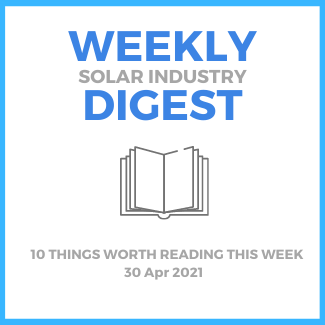One pundit reminds us that Biden’s pledges are not policy and investment – yet. To actually count they need to be federal policies that are implemented and enforced. He also says the pledges are not enough, promise more than can be delivered, and are not connected to any policymaking levers.
SEIA has created a tool to increase solar supply chain transparency to help monitor ethical creation of solar components along the solar value chain. Called the Solar Supply Chain Traceability Protocol, it sets parameters for companies to meet compliance obligations and ensure ethical labor practices.
Long term study of the adoption of res solar revealed that demand for energy storage is rising, consumers are motivated most by potential savings, disaster resilience and reduced emissions, and cost remains a significant barrier. Also, lead to install timeline can be from 3 months to 4 years.
Accela has partnered with NREL to release SolarAPP+, a SaaS solution that provides instant online solar permitting. It is being rolled out to 1500 agencies and Accela’s state and local customers. The hope is that this will boost community resilience and accelerate solar permitting across the country.
States within the PJM Interconnection are asking FERC to get rid of MOPR and adjust rules around the FRR to temporarily allow utilities to procure resources to meet projected future demand beyond the current capacity market. The request is for temporary flexibility because it would be an expensive option.
Museums are increasingly embracing ways to operate sustainably, something that often includes solar. This green movement for art centers and museums is sometimes supported by museum and government policies and presents an opportunity for installers and other vendors along the solar supply chain.
The DOE has $8.25 billion in loans to support transmission projects. $5 billion will come from LPO to support innovative transmission projects and ones owned by federally recognized tribal nations while $3.25 billion will come from WAPA’s TIP revolving loan program for the western US.
PV Mag Solar 101 series parts 1 and 2 looked at how roof characteristics impact system design and payback and how weather concerns and panel setbacks determine the number of panels. Part 3 looks at the relationship between panel latitude, pitch, and azimuth to solar electricity output/ROI.
Tesla put out 445 MWh of battery storage in Q1 2021, a 71% increase from Q1 2020. Its solar deployment topped 92 MW in Q1, the strongest quarter in two years. They’re shifting to only selling solar-panel products paired with the Powerwall battery, no longer selling them separately.
FlexGen has a new service that uses their DigitalTwin tech to calculate the feasibility of pre-development projects for energy storage. The report generated takes a virtual model of the planned install and allows the user to determine revenue, lifecycle costs, and grid impact for interconnection.


